Fixation Portfolio
Observation of bodily and facial patterns in a visual format.
Description
This section documents observable bodily and facial structures using the tools of visual psychology.
Each image represents a paused state — without interpretation, without symbolism, without staged expression.
Each image represents a paused state — without interpretation, without symbolism, without staged expression.
Unlike artistic or documentary photography, visual fixation functions as an analytical tool. It allows observation of:
• the body axis and its shifts,
• facial structure,
• the pose as a stable pattern,
• bodily forms of holding, protection, contact, or withdrawal.
• facial structure,
• the pose as a stable pattern,
• bodily forms of holding, protection, contact, or withdrawal.
Each photo is accompanied by a structured description — a fixation composed according to the principle of:
— fixation of the observable (what is objectively visualized),
— fixation of the repeatable (what recurs across different contexts),
— fixation of the non-interpretable (what is not subject to subjective reading).
— fixation of the repeatable (what recurs across different contexts),
— fixation of the non-interpretable (what is not subject to subjective reading).
Fixation refers to the systematic recording of visible, bodily-psychological configurations that emerge in paused states of expression, postural form, or visual contact.
Series Structure
25self — fixations of individual states
25team — fixations of dyadic and group interaction
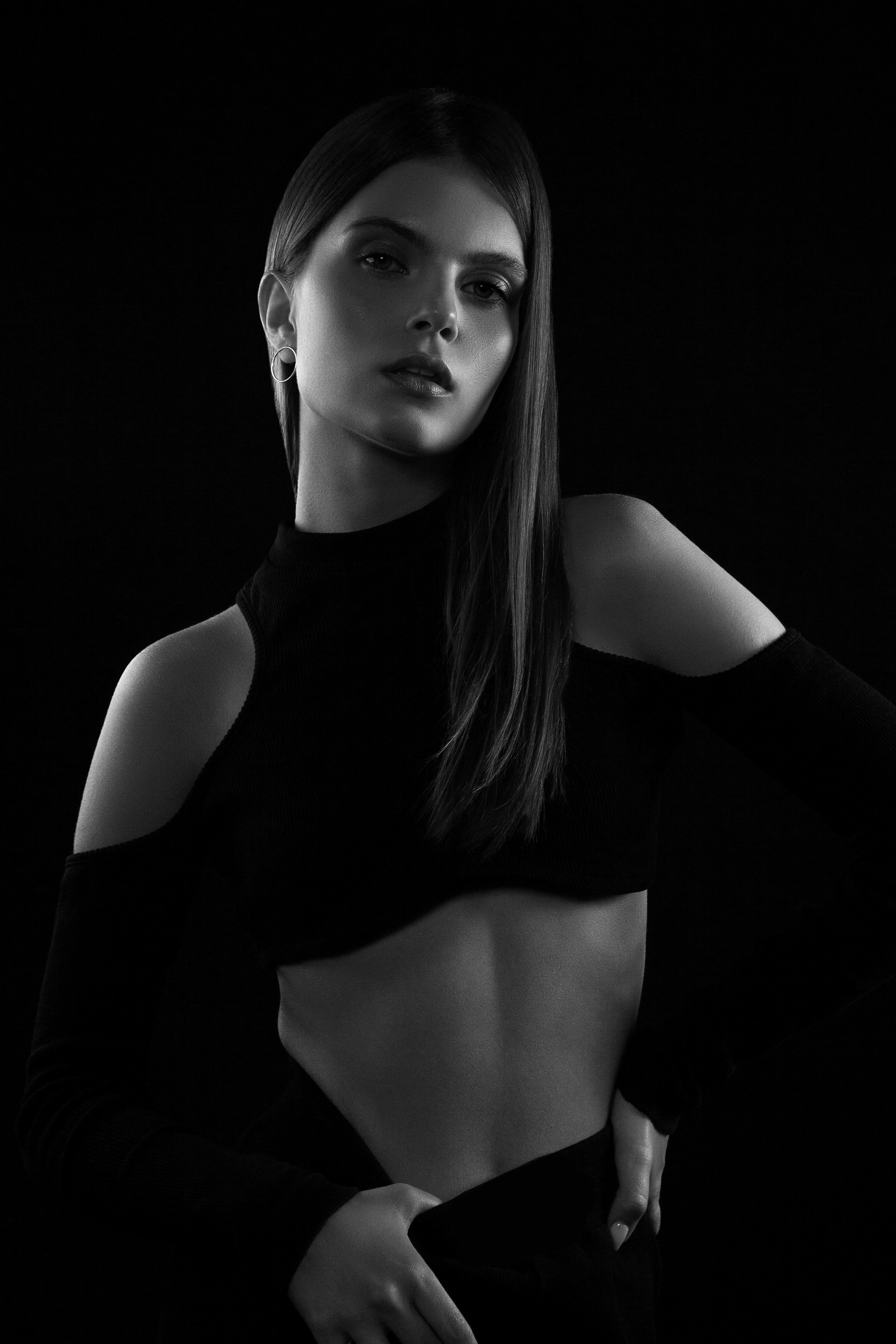
Ph1
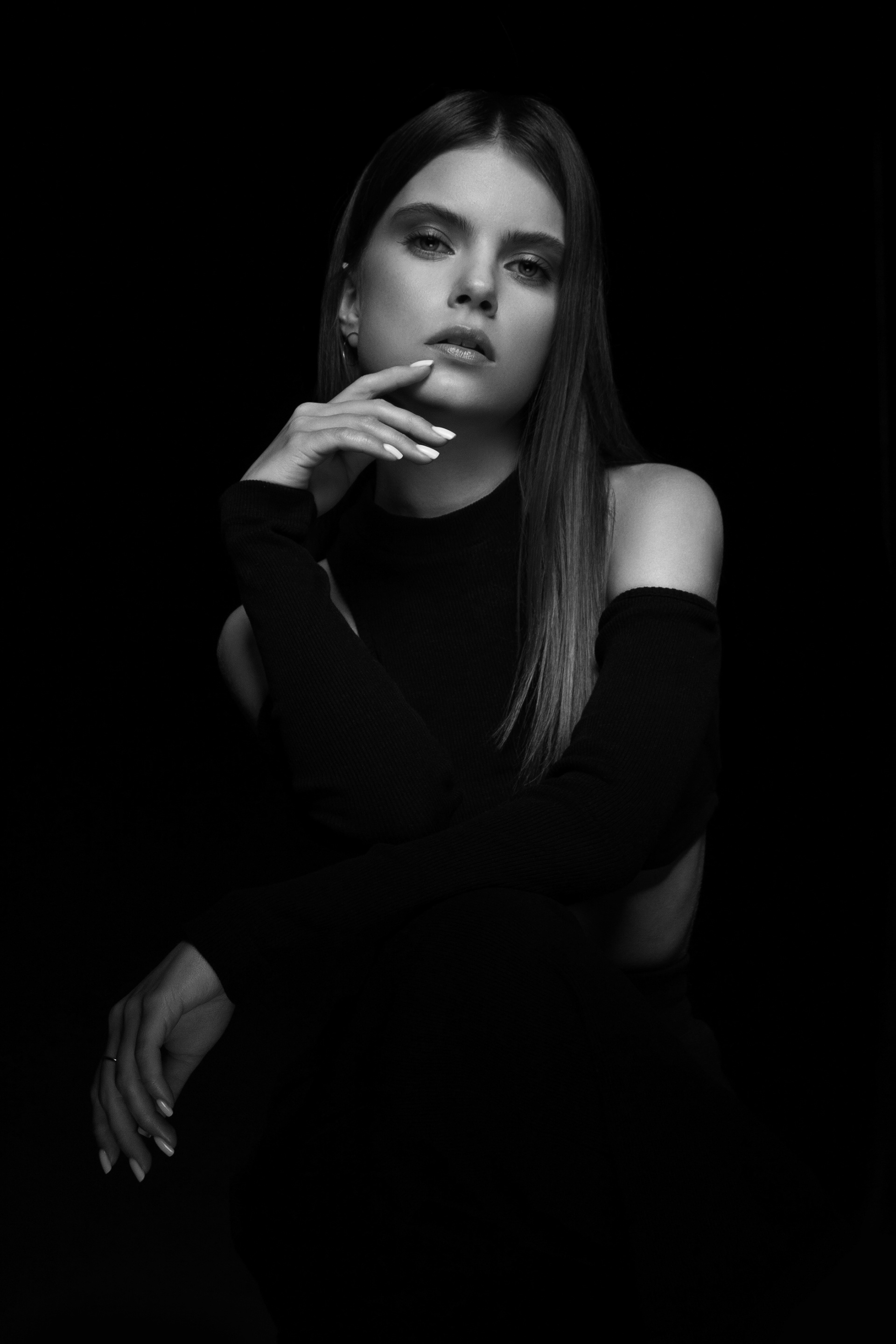
Ph2
01 / 25self
Tension and Visual Control
General Characteristics
This series presents a stable frontal posture with pronounced indicators of bodily and facial self-regulation. Both images maintain consistent alignment of the body axis and visual fixation, with only minor variations in gesture. The shift between frames reveals microdynamics in posture without transitioning out of the state.
Ph1
• Bodily structure: Torso aligned along the central axis; shoulders symmetrical. Right hand on waist; left hand holding fabric.
• Body axis: Vertical and stable; no shifts.
• Facial expression: Lips closed, neutral. Eyes slightly averted and fixed.
• Contact: No directed gesture; body open, yet not engaged.
Ph2
• Bodily structure: Torso remains frontal. Left hand touches chin; right hand lowered.
• Body axis: Slight backward lean; axis consistent.
• Facial expression: Increased ocular focus; gaze becomes stronger.
• Contact: Internal fixation intensified by hand gesture; no interactive orientation.
Structure and Signals
Microdynamics appear in hand movement and gaze focus. Shoulder and facial tension remain constant. The second gesture functions as added fixation, not a state change.
Conclusion
A consistent structure of bodily and facial control is observed. Fixation and postural dynamics remain low in amplitude and stable.
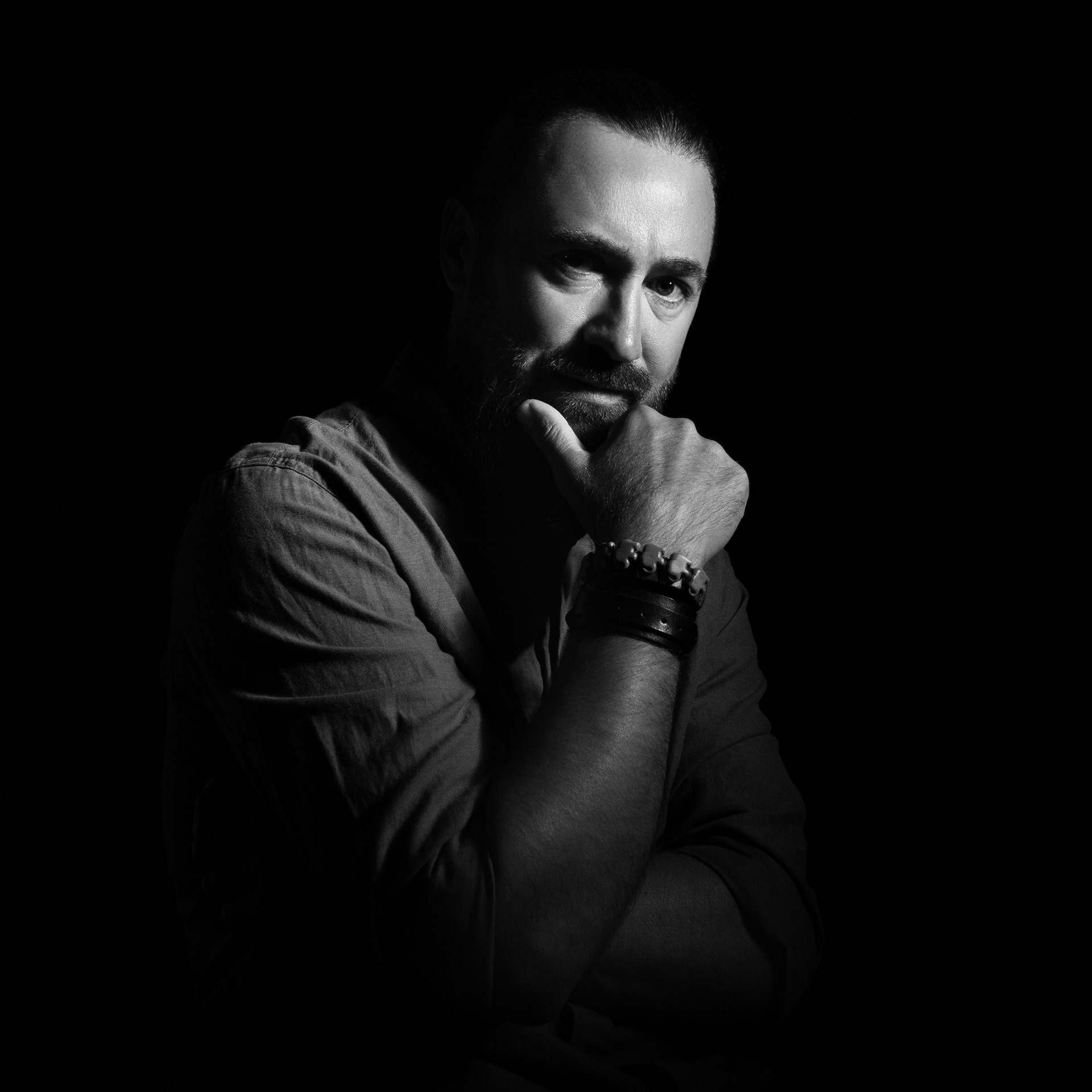
PH1
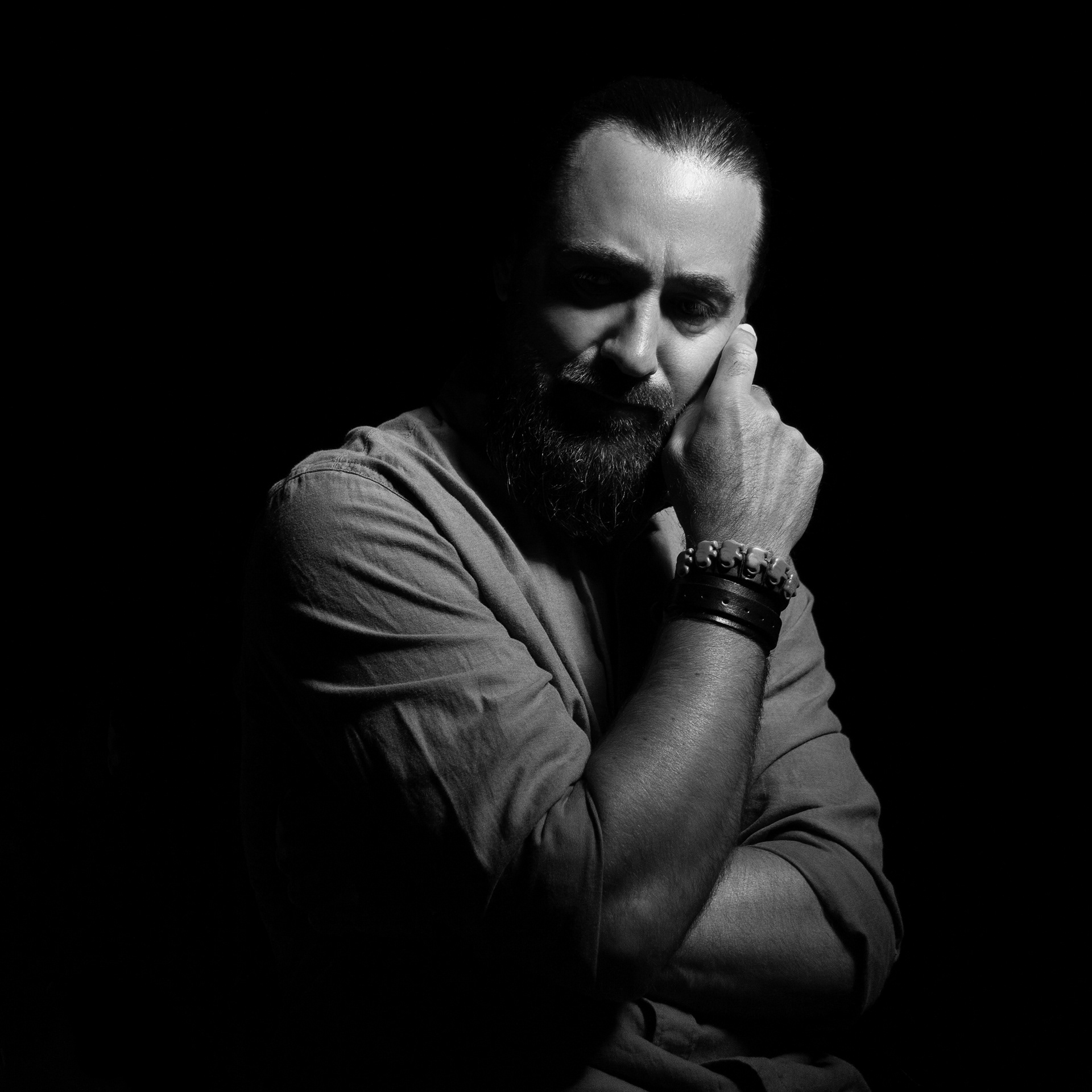
Ph2
02 / 25self
Inward Containment
General Characteristics
This series captures a self-focused posture with elements of closure. Both images show limited external engagement and inwardly directed gestures. The visual channel is active in the first frame, deactivated in the second.
Ph1
• Bodily structure: Torso in three-quarter view. Right hand under chin; left arm across torso.
• Body axis: Diagonal, stable; weight shifted to the right.
• Facial expression: Gaze to camera; facial tension around eyes and mouth.
• Contact: Gaze present, gestures closed; expression appears withdrawn.
Ph2
• Bodily structure: Torso unchanged. Right hand touches cheek/ear; left remains across body.
• Body axis: Maintained. Head tilts slightly toward hand.
• Facial expression: Eyes closed; forehead tense.
• Contact: Visual contact absent. Gesture reinforces internal orientation.
Structure and Signals
A stable scheme of containment is maintained. Repetition in arm positioning and persistent facial tension define a consistent internal fixation.
Conclusion
The series shows a closed posture with sustained internal focus. Visual withdrawal in the second frame reinforces the non-interactive stance.
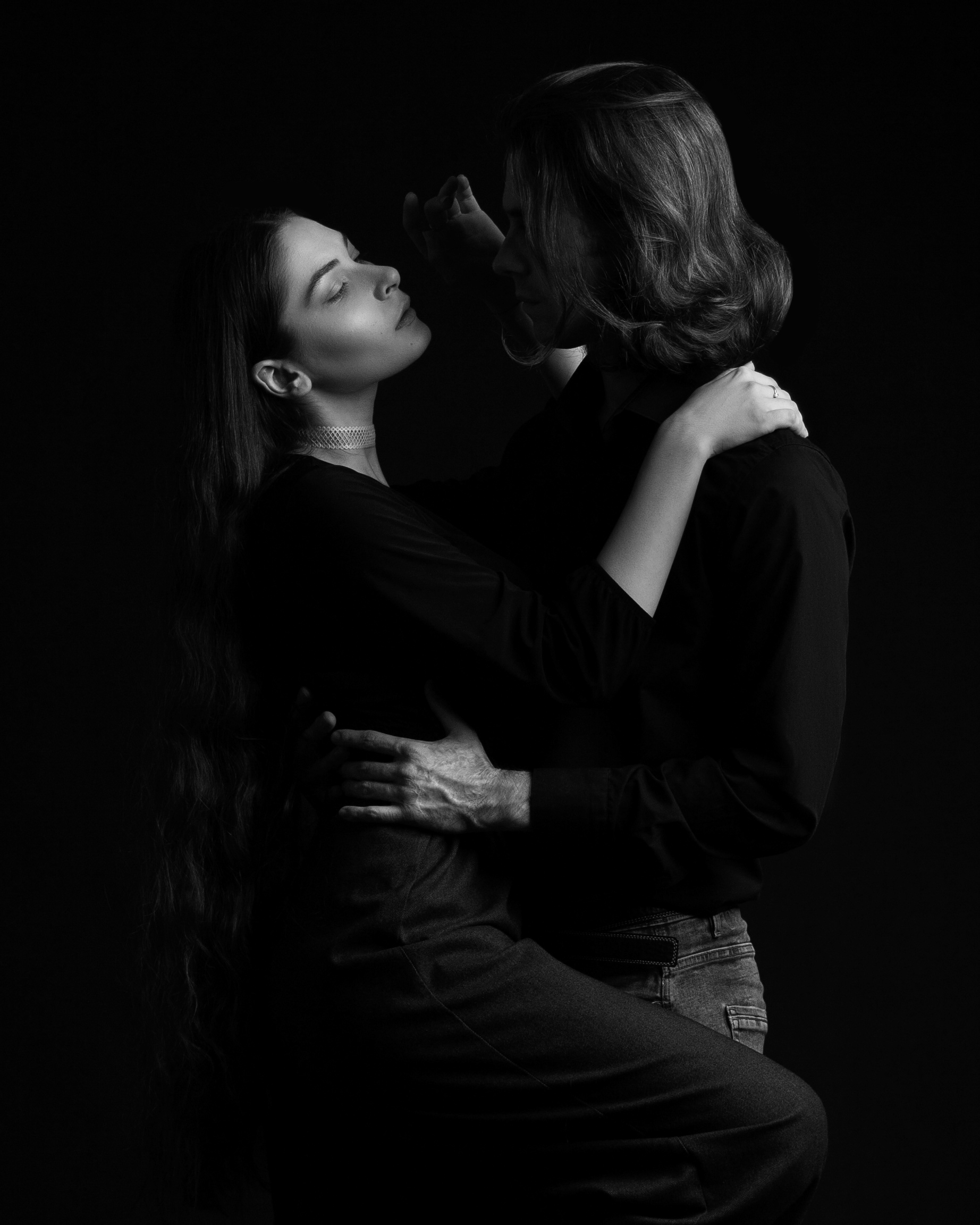
Ph1
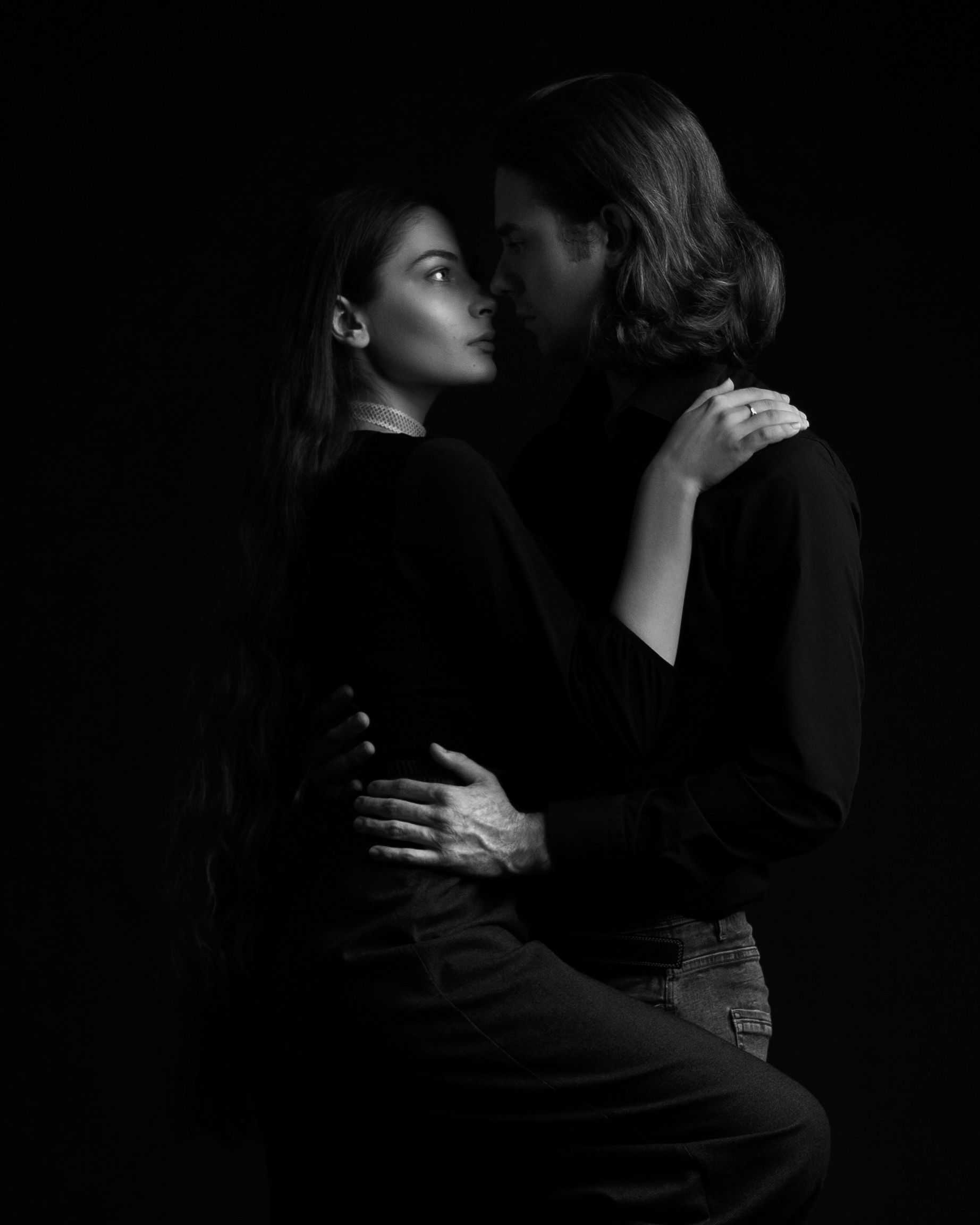
Ph2
03 / 25self
Proximity and Containment
General Characteristics
Two subjects maintain a unified bodily construction with minimal change across frames. The configuration is closed, symmetrical, and physically proximate. Emotional expression is regulated.
Ph1
• Bodily structure: Upright posture; one leg lifted. Embrace from female subject; male hand holds her waist from below, stabilizing the pose.
• Body axis: Both directed inward; balanced stance.
• Facial expression: Neutral. Female gaze downward; male eyes closed.
• Contact: Full bodily contact; no visual contact.
Ph2
• Bodily structure: Pose consistent; male hand shifts slightly.
• Body axis: No changes.
• Facial expression: Female gaze meets partner’s; male gaze now directed at her.
• Contact: Visual contact established; bodily posture remains unchanged.
Structure and Signals
Stability across frames; the only change occurs in the visual channel. Holding pattern is symmetrical; no emotional amplification or withdrawal.
Conclusion
A regulated dyadic structure is preserved. Visual transition occurs without disrupting containment or postural coherence.

Ph1
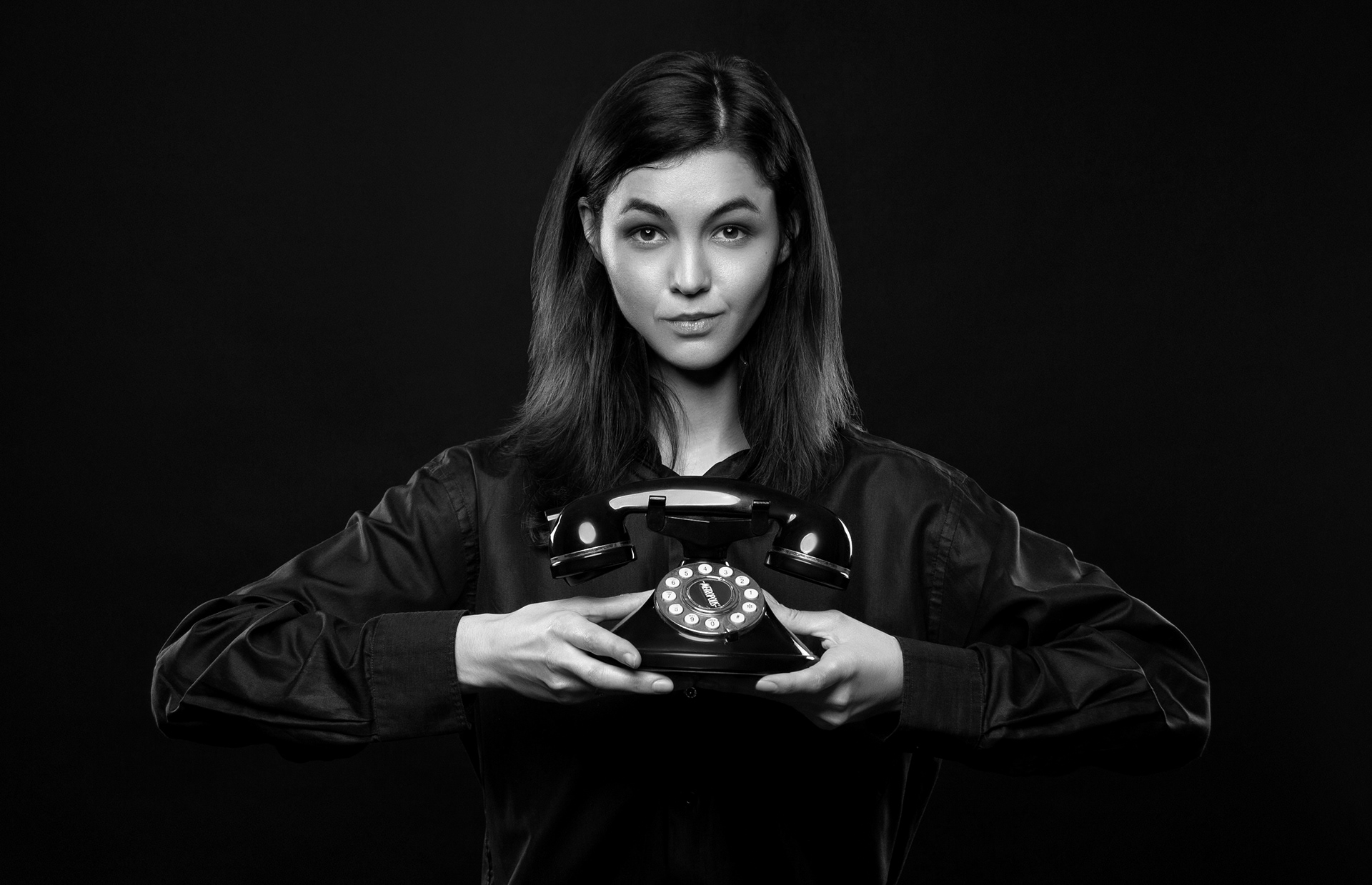
PH2
04 / 25self
Object-Centered Containment
General Characteristics
A frontal posture incorporating a symbolic object (vintage telephone) as a fixation point. Bodily structure remains stable; subtle facial shifts occur across frames.
Ph1
• Bodily structure: Torso aligned; arms hold object at chest.
• Body axis: Vertical, centered.
• Facial expression: Neutral, symmetrical; gaze at camera.
• Contact: Direct gaze without confrontation; object directed inward.
Ph2
• Bodily structure: Identical to first frame.
• Body axis: No change.
• Facial expression: Slight softening; minimal brow and lip movement.
• Contact: Subtle engagement increase, gaze direction constant.
Structure and Signals
Object functions as dual fixation anchor (manual and attentional). Microdynamics appear solely in facial expression.
Conclusion
A fixed postural configuration with minimal expressive variation. The containment remains uninterrupted; gaze and object define the fixation.
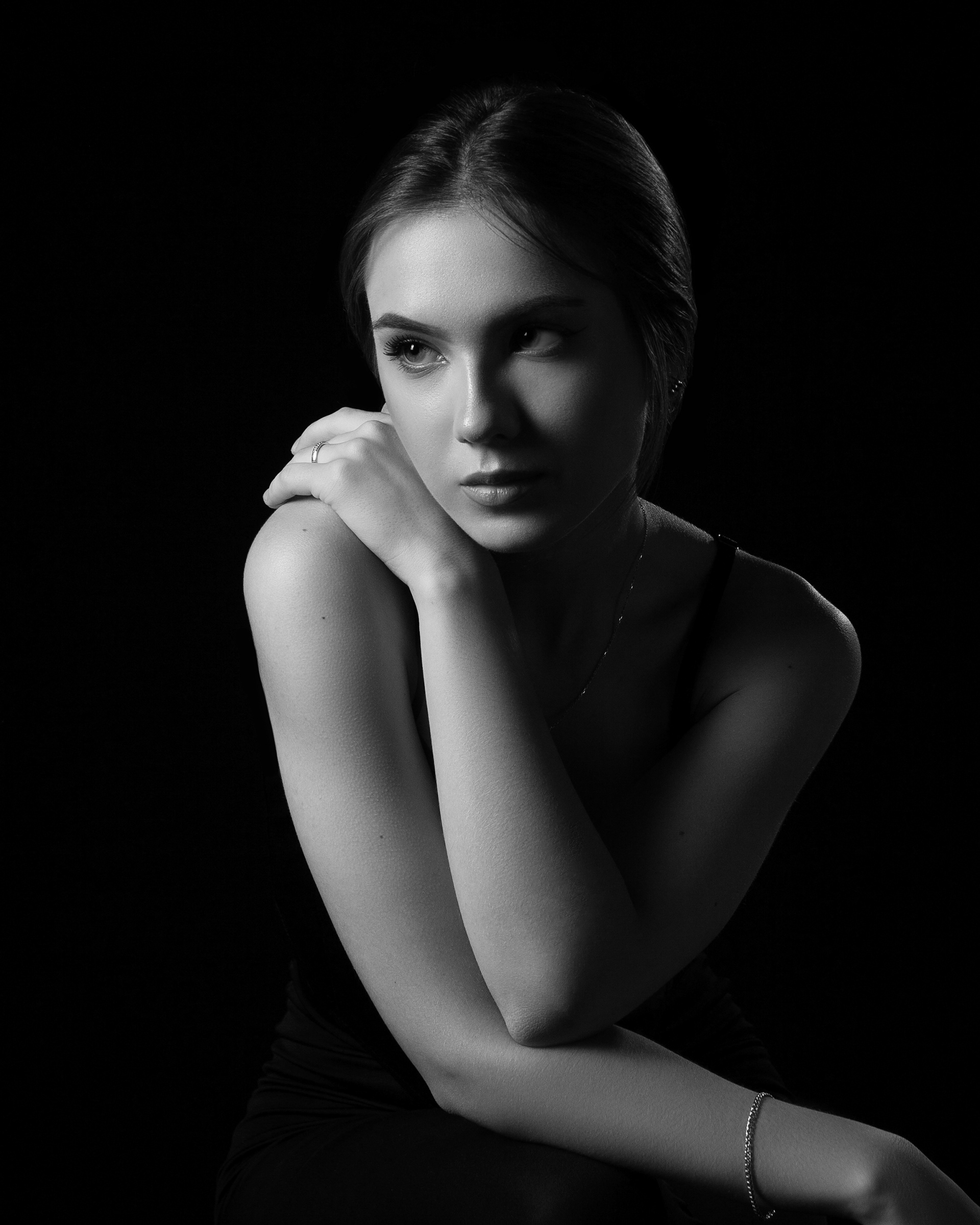
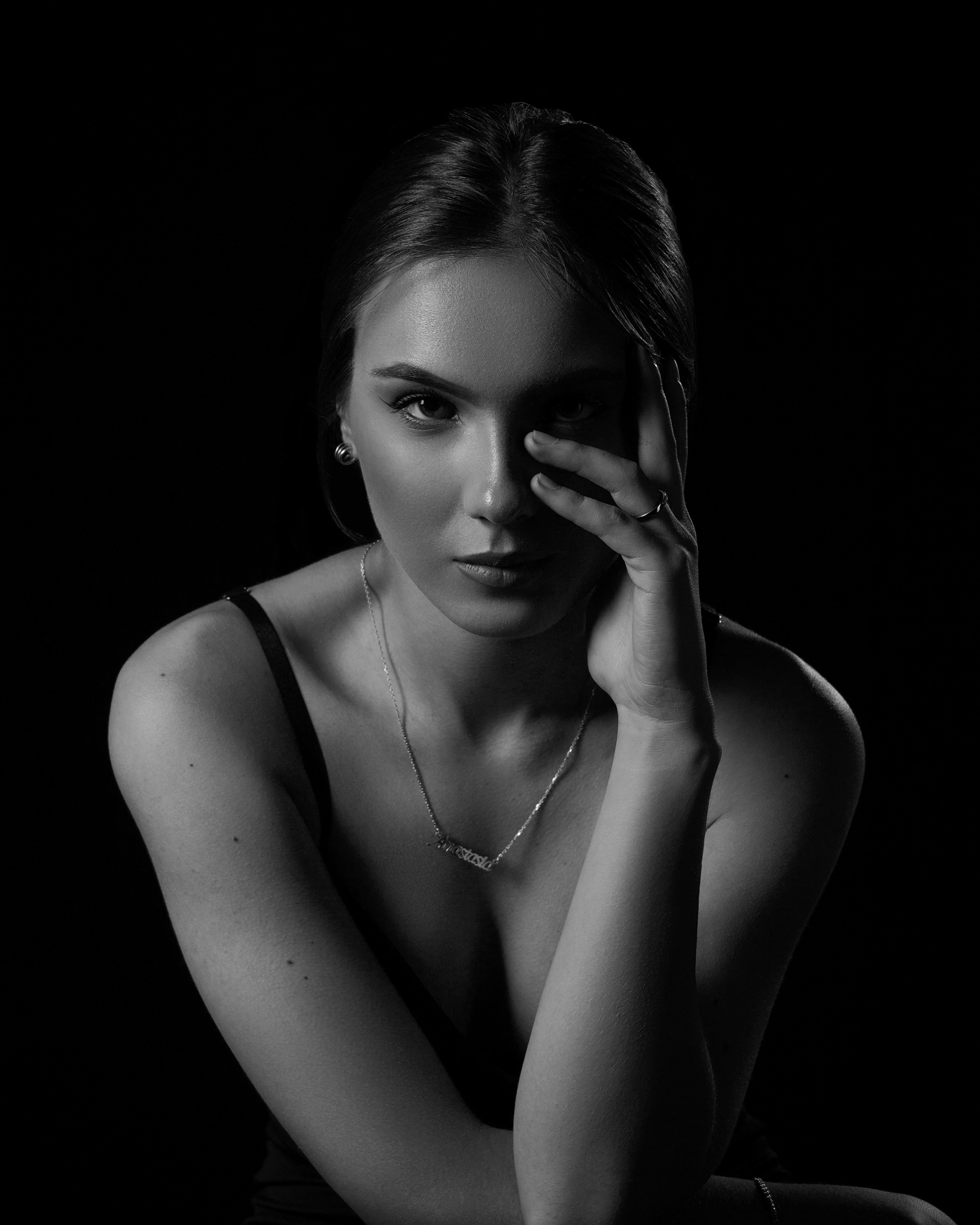
05 / 25self
From Withdrawal to Directed Observation
General Characteristics
Two stable poses show a transition in visual orientation. From partial withdrawal in the first frame, the subject returns to direct gaze through a gestural filter in the second.
Ph1
• Bodily structure: Torso inclined forward/right; right hand on left shoulder.
• Body axis: Shifted to right; stable.
• Facial expression: Lips closed; gaze sideways; upper face relaxed.
• Contact: No visual contact; internally directed.
Ph2
• Bodily structure: Torso maintained; right hand raised to eye, forming a frame.
• Body axis: Centered via head alignment.
• Facial expression: Symmetrical; gaze now directed at camera.
• Contact: Visual channel activated through gesture; no emotional expression.
Structure and Signals
Gesture serves as both fixation and filter. Visual transition is controlled; posture remains stable.
Conclusion
The series reflects a managed return to gaze contact without emotional escalation. The postural and expressive structure is preserved.
Ethical Framework
All images are published with the participants’ informed consent.
The photographs are not clinical or diagnostic material.
The photographs are not clinical or diagnostic material.
Construct of Psychological Resilience
